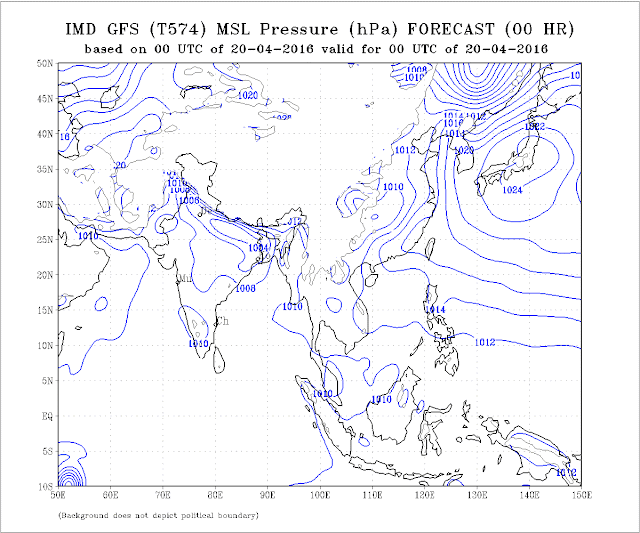Scorching heat wave in Thailand is longest in 65 years ...National Record broken !
April in Thailand is typically hot and sweaty, but this year's scorching weather has set a record for the longest heat wave in at least 65 years.
The average peak temperature each day this month has been above 40c, with the mercury spiking one day to 44.3c— just short of the all-time record.
On this very day, April 27, in 1960, Thailand posted its hottest day ever recorded at 44.4c in the northern province of Uttaradit.
Maximiliano Informs:
Thailand National Record has been broken...The highest ever temperature of 44.6c was recorded at Hong Son on 28th April 2016.
Palakkad on 26th recorded 41.9c...The Hottest temperature ever recorded in Kerala. Kannur breaks it all time record with 39.2c.
Countries across Southeast Asia are feeling the heat. Sri Lanka: Jaffna broke its all time high record by touching 37.0c on 28th April, beating 36.7c recorded in 1983.
April in Thailand is typically hot and sweaty, but this year's scorching weather has set a record for the longest heat wave in at least 65 years.
The average peak temperature each day this month has been above 40c, with the mercury spiking one day to 44.3c— just short of the all-time record.
On this very day, April 27, in 1960, Thailand posted its hottest day ever recorded at 44.4c in the northern province of Uttaradit.
Maximiliano Informs:
Thailand National Record has been broken...The highest ever temperature of 44.6c was recorded at Hong Son on 28th April 2016.
Palakkad on 26th recorded 41.9c...The Hottest temperature ever recorded in Kerala. Kannur breaks it all time record with 39.2c.
Countries across Southeast Asia are feeling the heat. Sri Lanka: Jaffna broke its all time high record by touching 37.0c on 28th April, beating 36.7c recorded in 1983.






































